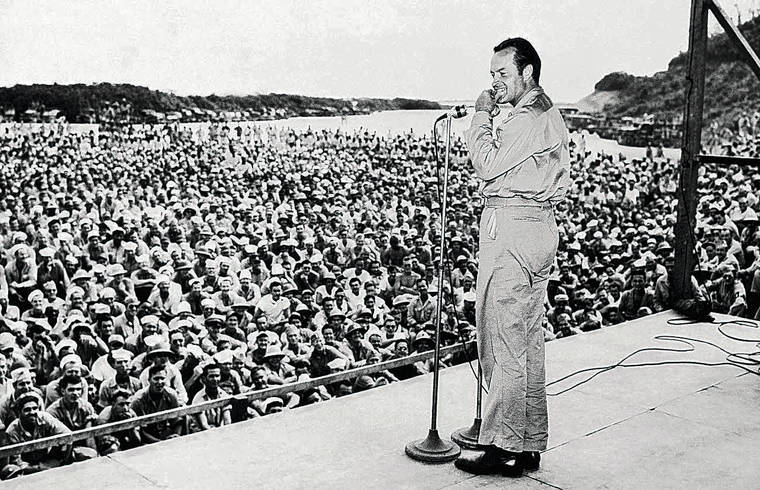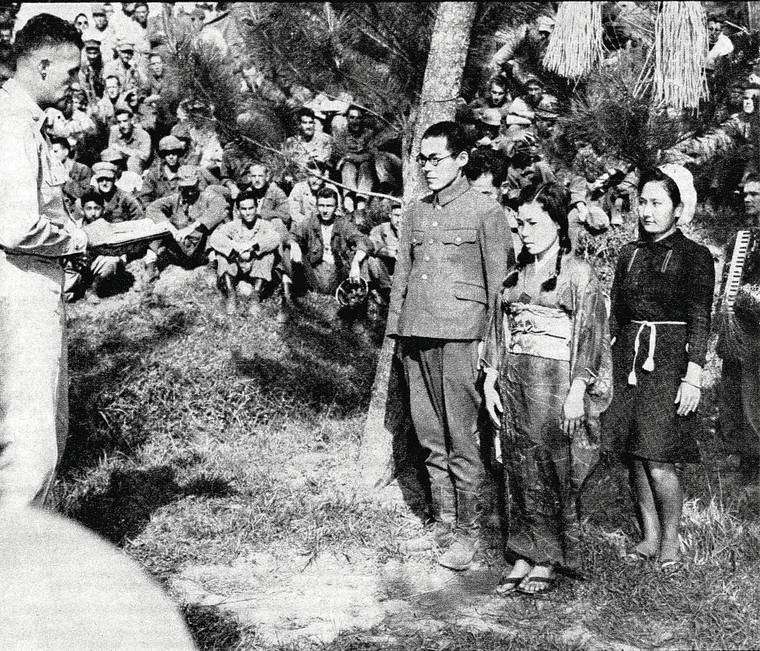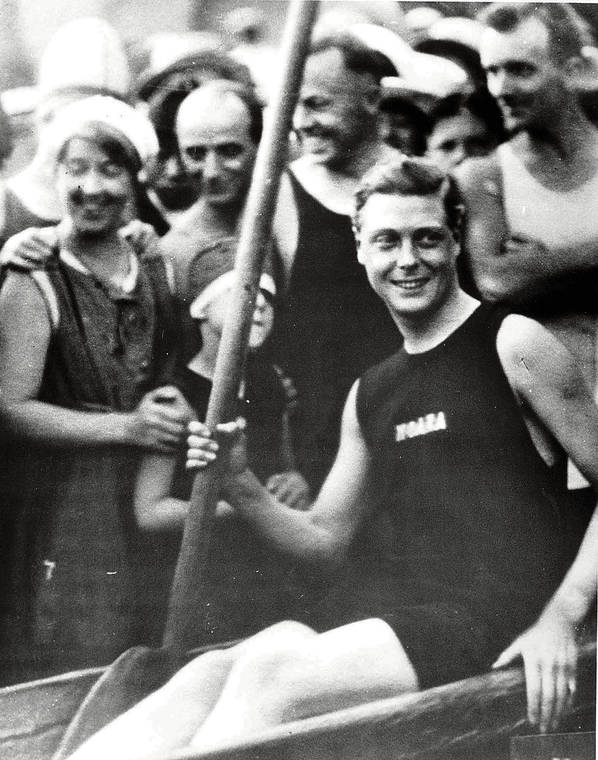Every December, I review the past 12 months and write a two-part article about things I learned while researching this column.
I am constantly uncovering new facts and insights about people, places and organizations I thought I knew well. Writing Rearview Mirror is a joy for me. Here are some of the things I learned this year.
Times Supermarket
Albert and Wallace Teruya left Kewalo Inn to start Times Grill cafe and then Times Supermarket. I knew that. But I didn’t know why.
In 2020 I learned they had a brother, Herman, who wanted to own a grocery store. Unfortunately, he died fighting in Italy with the 442nd in World War II, but his brothers fulfilled his dream by opening Times Supermarket. It was a living memorial to him.
200th anniversary of the missionaries’ arrival
In May I wrote about the 200th anniversary of the arrival of the missionaries in the kingdom. I was not aware, until I began researching the article, that the mission was inspired by Henry Opukaha‘ia, a young Hawaiian man on the East Coast who had traveled to the mainland in 1807.
Four young Hawaiian men accompanied the missionaries from Boston. Three were interpreters and assistants. The fourth was the son of the king of Kauai.
The missionaries dropped anchor off the west coast of Hawaii island, and Kalanimoku and his entourage came out to greet them. The missionaries were surprised he was better dressed than they.
The Rev. Hiram Bingham wrote that Kalanimoku wore “a white dimity (lightweight cotton) roundabout, a black silk vest, yellow Nankeen (cotton) pants, shoes, white cotton hose, plaid cravat, and fur hat.”
Kalanimoku shook hands with the men and bowed to the women, saying “aloha” to each. He stayed aboard, chatted and dined with the missionaries.
Stranded
I wrote 10 articles celebrating the 75th anniversary of the end of World War II this summer and learned many interesting things.
I knew that the San Jose State and Willamette University football teams were stranded on Oahu in December 1941. Many of their players joined the Honolulu Police Department.
By sheer coincidence, the Spartans of San Jose State are in town today to play University of Hawaii in football on Saturday. I extend to them my aloha.
I didn’t know that the Punahou football team was on Maui to play Baldwin High School the night of Dec. 7. The game was called off, and the team was stuck on Maui for 11 days.
The Saint Louis College football team was stranded on Kauai, where it had played an all-Army team on Dec. 6. Saint Louis won 39-0.
I also learned that Hilo, Kahului and Nawiliwili were shelled by Japanese submarines in the first month of World War II. One sub sunk the transport ship Royal T. Frank between Maui and Hawaii island, killing 17 troops.
The tragedy took place on Jan. 28, 1942, journalist Peter von Buol wrote in Maui Magazine.
Thirty-six were thrown or jumped in the water. They were picked up later by another ship and taken to a hospital and gym in Hana. The survivors were treated, flown back to Oahu and told not to talk about it. They kept the secret for 50 years.
In 2000 the 17 soldiers from Hawaii who died and nine local survivors were honored at a public ceremony in Hilo. A granite memorial at a Hawaii island cemetery was dedicated to these early Hawaii casualties of WWII — 58 years after the Frank was sunk.
The wreck of the Frank has never been found.
Unusual wedding
The wedding of a captured Japanese officer to an Okinawan nurse during the war was an amazing revelation to me. And then to find out a Maui girl, Doris Ishikawa, who was stuck on Okinawa during the war, was a bridesmaid at the wedding and that her family had a photo of it was mind-blowing.
We don’t know the married couple’s names, but the Japanese officer offered to help the U.S. if they allowed him to marry the love of his life. Paul Tognetti, who was part of the San Jose State football team, joined the Honolulu police, then Army Intelligence.
Tognetti said it was the most unusual wedding he ever attended.
“A detail of 6-foot MPs, clad in white helmets and carrying sawed-off shotguns, formed a pathway for the wedding party.
“An AJA interpreter acted as best man while Doris Ishikawa of Maui, who was a refugee on Okinawa, was bridesmaid.
“The bride managed to find a kimono in which to be wed. A GI played the wedding march on an accordion.”
“The wedding went off without a hitch, except that the best man forgot to give the groom the ring at the last minute, and Doris broke into unrestrained giggling over this faux pas.”
Tognetti said the newlywed officer did cooperate and that his information saved many American lives. After that the newlyweds passed into obscurity.
Surfing lessons for a prince
Edward, the Prince of Wales, who gave up the British throne for Wallis Simpson, the woman he loved, visited Hawaii in 1920.
Duke Kahanamoku gave him canoe rides and surfing lessons as hundreds watched. The prince loved it.
The prince met two visitors from the mainland, Mrs. Bertha Van and Miss Alyce Sommer. He dined with them, and then they went for a midnight swim in the ocean. In play, the prince swam close to Bertha Van and splashed her with water.
With a merry laugh Mrs. Van reached out and shoved the prince’s blond head beneath the waves. The San Francisco Examiner wrote that she “ducked” him. Gasping and puffing, the prince found his way to the surface.
In spite of his injured dignity, the prince took it all in stride. “Quite rude but extremely amusing.” he said, “but I will say your American girls can certainly look out for themselves.”
Yank aviator
Last month I wrote about Duke Kahanamoku. This year I learned he wanted to join the air crops but came down with the Spanish flu in 1918. He was on a swimming tour of 30 cities on the mainland to raise money for the Red Cross.
At its conclusion he visited people in the aviation service in Washington D.C., with the hopes of becoming a “Yank aviator,” something he described as a life ambition of his.
But he caught the flu and was treated at Walter Reed hospital. He nearly died, he said. The flu and the end of World War I dashed his dreams of flying.
Bob Hope
The famous movie star and later television comedian entertained troops for over five decades. Many consider him to be the first stand-up comedian.
In one two-month period, Hope gave 28 performances before 180,000 servicemen, logged some 30,000 miles and had a nonfatal crash landing before returning to the United States in September 1944.
Hope’s plane developed engine trouble and crash-landed in Australia, en route to Sydney.
“Our plane landed in a river, and we beached it on a sandy little island,” Hope said. “People from the town came out in boats to meet us.” No one was injured. The troupe put on a show for the villagers that night.
Those are some of the things I learned in 2020. Next week I’ll finish my review.
The Rearview Mirror Insider is Bob Sigall’s now twice-weekly free email newsletter that gives readers behind-the-scenes background, stories that wouldn’t fit in the column, and lots of interesting details. Join in and be an Insider at RearviewMirrorInsider.com.






